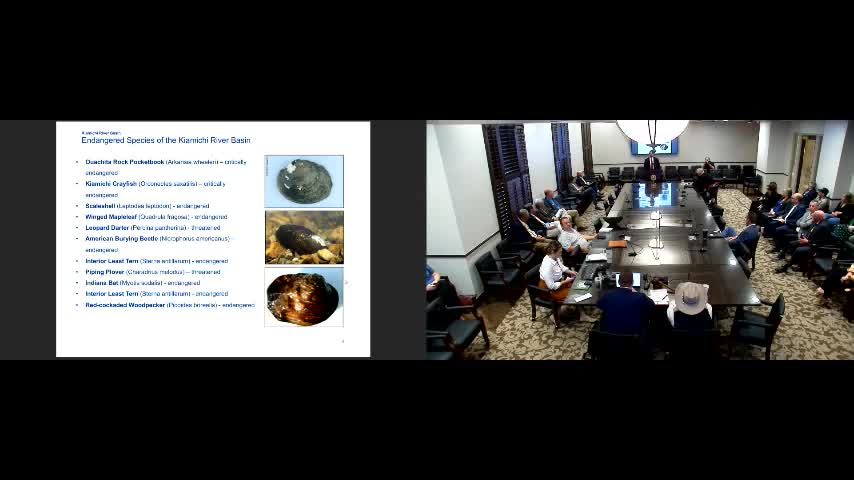FERC faces backlash over controversial water project impacts
October 30, 2024 | Energy and Natural Resources, House of Representatives, Legislative, Oklahoma
This article was created by AI summarizing key points discussed. AI makes mistakes, so for full details and context, please refer to the video of the full meeting. Please report any errors so we can fix them. Report an error »

In a recent government meeting, significant concerns were raised regarding a proposed closed loop pump storage facility that may not meet federal criteria set by the Federal Energy Regulatory Commission (FERC). The facility, which aims to utilize water from the Kiamichi River and Coyamiche River, has been scrutinized for its potential environmental impacts, particularly on aquatic species.
Critics highlighted that the project does not satisfy two of the four essential criteria defined by FERC for closed loop pump storage facilities. Specifically, concerns were voiced about the likelihood of adverse effects on endangered species, with the U.S. Department of the Interior indicating that the project could lead to extinction events for certain species due to altered water levels and habitat degradation.
The facility is projected to require an initial fill of approximately 68,269 acre-feet of water—equivalent to over 22 billion gallons—over a period of 24 to 36 months. Additionally, it would need to replace around 20,000 acre-feet annually to account for leakage and evaporation, raising further questions about its sustainability and impact on local water resources.
The project site spans 10,200 acres and includes a 99-mile transmission line connecting to the deregulated Texas electricity market. This connection is intended to allow the facility to capitalize on price fluctuations in electricity, purchasing power during low-demand periods and selling it back when prices rise.
As the project moves forward, stakeholders are urged to consider the long-term ecological consequences and the potential for significant disruption to local ecosystems. The discussions from the meeting underscore the importance of thorough environmental assessments before any licensing decisions are made, which are expected to occur in the next two to three years.
Critics highlighted that the project does not satisfy two of the four essential criteria defined by FERC for closed loop pump storage facilities. Specifically, concerns were voiced about the likelihood of adverse effects on endangered species, with the U.S. Department of the Interior indicating that the project could lead to extinction events for certain species due to altered water levels and habitat degradation.
The facility is projected to require an initial fill of approximately 68,269 acre-feet of water—equivalent to over 22 billion gallons—over a period of 24 to 36 months. Additionally, it would need to replace around 20,000 acre-feet annually to account for leakage and evaporation, raising further questions about its sustainability and impact on local water resources.
The project site spans 10,200 acres and includes a 99-mile transmission line connecting to the deregulated Texas electricity market. This connection is intended to allow the facility to capitalize on price fluctuations in electricity, purchasing power during low-demand periods and selling it back when prices rise.
As the project moves forward, stakeholders are urged to consider the long-term ecological consequences and the potential for significant disruption to local ecosystems. The discussions from the meeting underscore the importance of thorough environmental assessments before any licensing decisions are made, which are expected to occur in the next two to three years.
View full meeting
This article is based on a recent meeting—watch the full video and explore the complete transcript for deeper insights into the discussion.
View full meeting
